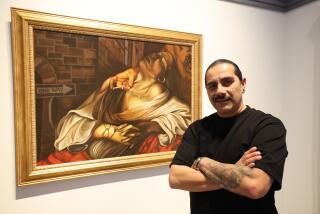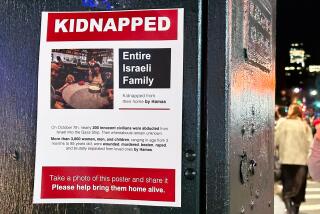Mushrooms and murals put Hungarian Gypsies on the map
BODVALENKE, Hungary — I’m not sure what I expected to bring back from an eight-day luxury tour of Budapest, Hungary, and environs. Memories, photos of Art Nouveau architecture, a few extra pastry-induced pounds and a lifetime supply of sweet paprika, maybe.
I never thought I’d find myself, just a month later, Skyping at 7 a.m. about a storm that had recently hit the village of Bodvalenke, about 150 miles northeast of Budapest, not far from the Slovakian border. Hailstones the size of walnuts had caused flooding and decimated the natural vegetation and local crops, one of the village’s few sources of income.
“What about the wild mushrooms?” I asked my Skype partner in Hungary.
“No mushrooms,” Eszter Pasztor said, then added with characteristic spunk, “they will be back next year. Or maybe in the autumn.”
Pasztor lives in Budapest, not Bodvalenke. But as director of the Bodvalenke Fresco Village Project, she is familiar with the plight of this impoverished but hopeful village and its residents.
Bodvalenke has 204 residents, most of whom are of Roma, or Gypsy, descent. One hundred and four of the residents are children, Pasztor said. Of the 100 adults, only three have jobs. Most homes have no running water, and most residents subsist on welfare.
The sleepy, picturesque nature of the town belies its poverty, the legacy of the historical persecution of the Roma in Europe. During World War II, thousands of Roma were exterminated in the Nazi genocide.
But thanks to the Fresco Village Project, the homes of Bodvalenke have acquired a defiant beauty. Beginning in 2009, 16 Roma artists from throughout Europe have brightened exterior walls with 29 large-scale murals, many of which reflect the realities of Bodvalenke and the Gypsy legends behind the culture. (Pasztor told me that the term Gypsy is not considered pejorative, but the community has designated Roma as the official name of the ethnic group.)
Although none of the adult artists lives in Bodvalenke, the town’s most recent mural, completed in October, was painted by disadvantaged children, mostly of Roma descent and including two from Bodvalenke.
Luckily the hailstorm did not harm the murals, Pasztor told me. But water damaged some roofs and poses an eventual threat to the artworks. As usual, Bodvalenke is struggling against adversity.
“Sometimes I have felt that the whole world is against this project,” Pasztor said. “Which is not true, of course, but we get very little help.”
My husband, Alan Feldstein, and I learned to care about the wild mushrooms — and the people — of Bodvalenke during our visit in June. While in Budapest, we feasted on goulash, pastries and delicious wines. But perhaps our best meal included the wild forest mushrooms of Bodvalenke, served with cabbage soup, fluffy dumplings and a baked dessert in the modest kitchen of Magda Rusznyak, a village resident. She had gone into the forest that morning to gather the mushrooms.
Although Alan and I often go in for adventure travel (he more than I), our first foray to Eastern Europe was to be of the luxury variety. The tour included castles and museums, costumed equestrians, fine dining and opera houses. But our tour operator, John Ricci of Wandrian Adventures, is a friend of Alan’s and knew we would want something challenging as well.
Our itinerary gave a brief description of the day: We would visit the Fresco Village, have lunch at a local family’s home and visit a local school for “cultural exchange.”
If you’re like me, the actual itinerary always ends up at the bottom of your bag, so as the day approached it just became known as “the visit to the Gypsy village.” Our guide, Gabriella Balint, told us the town had only one street. I started to picture a couple of hours on a touristy strip with phony fortune tellers and trinkets for sale.
Instead, we almost immediately found ourselves in the project office in an intense discussion with Pasztor about Hungarian history and the ways it had worked against the Roma for decades. We were surrounded by ancient PCs, the only ones available to village children eager to learn. We also found out that the project office had the town’s only working toilet for visitors.
Pasztor is not Roma, but she has become passionate about the people. She said she was inspired to take action after seeing a TV news report on a rally by a group preaching ethnic hatred. “It really got me angry,” she said.
Until then, Pasztor said, she had not known any Roma people, “but I don’t want to live in a country where people have to live in fear.”
Pasztor launched the project, she said, to draw tourists — and money — to the village. The murals, she hopes, will put Bodvalenke on the map as a public art capital.
As an adjunct to the project, Bodvalenke has inaugurated the annual Dragon Festival, July 4-6, a celebration of Roma art and culture that includes tours of the murals, dancing and folk music. There are no hotels or restaurants in Bodvalenke, but the village women pitch in to feed the visitors. Many guests are young people who don’t mind camping. For others, Pasztor said there are some options for guest housing and nearby towns with hotels.
We arrived too soon for the year’s July festivities, but Pasztor said the event drew 1,500 visitors. “Quite something to provide for in such a tiny village,” she said with massive understatement.
Before lunch, Pasztor took us on a walking tour of the murals. On she marched, oblivious to the hot noonday sun, telling us the stories: Ferenc Kunhegyesi’s “Bodvalenke’s Ballad” depicts the everyday people of Bodvalenke behind a looming figure of an Indian demigod (the Roma are thought to have roots in India) with arms outstretched in a pose reminiscent of the Crucifixion. “To me, this picture is the Gypsy ‘Guernica,’ ‘’ she said, referencing Picasso’s work.
Janos Horvath’s “The Sun and the Moon” tells the Roma legend of two brothers who seek to rescue the Sun and the Moon, which have been stolen by an evil giant and entrusted to a dragon. The brothers charmed the dragon with music. The brother who retrieved the moon turned pale and from him descended all white people. The brother who stole back the Sun was burned dark and became the father of the Gypsies.
Dragons recur in many artworks because, as local legend has it, a dragon lurks in the marshes of Bodvalenke. In fact, Hello Wood — a Budapest-based group of young designers — has built an abstract wood dragon for the village. “Everyone said the Roma would just steal the wood for firewood, but they didn’t,” Pasztor said.
Serbian Roma multimedia artist Zoran Tairovic caused a stir in the village when he arrived in town and began to throw paint on the wall with buckets and smear it with his hands for his fresco “Ego, Id, Superego,” Pasztor said. Artists and villagers learned more about one another’s ways as the locals allowed their walls to become canvas. (In trade, residents received new rain gutters and other improvements.)
Los Angeles is known for its murals, including outsized works by artist Kent Twitchell and Mexican muralist David Alfaro Siqueiros’ 1932 work “America Tropical” on Olvera Street. Perhaps Angelenos might feel a connection with this little village attempting to rescue itself through public art. And hope for a new crop of mushrooms for the fall.
More to Read
Sign up for The Wild
We’ll help you find the best places to hike, bike and run, as well as the perfect silent spots for meditation and yoga.
You may occasionally receive promotional content from the Los Angeles Times.






